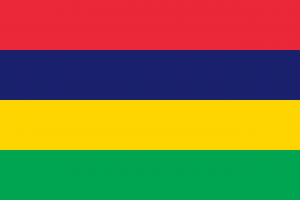Language/Morisyen/Grammar/Negation
Hi Morisyen learners! 😊
In this lesson, we are going to learn about negation in Morisyen. It is an essential aspect of the language that will allow us to express negation, prohibitions, and doubts. We will also talk about its different forms, its placement in the sentence, and its usage. At the end of this lesson, you should be equipped with enough knowledge to use negation in your speech and writing.
Finish this lesson and explore these related pages: How to Use "Have", Conditional Mood & Questions.
Negation Forms[edit | edit source]
Negation in Morisyen is expressed mainly through the use of negation markers. These markers are added to the verb or the auxiliary verb to indicate that the sentence has a negative meaning. The most common negation markers are "pa", "pé", "ti", "té", and "pa ti". Let's look at them more closely:
| Morisyen | Pronunciation | English |
|---|---|---|
| Pa | pa | Not |
| Pé | pe | Don't / Doesn't |
| Ti | ti | Didn't |
| Té | te | Wasn't / Weren't |
| Pa ti | pa ti | Haven't / Hasn't |
The negation marker "pa" is the most common and can be used in most situations. The main difference between "pa" and "pé" is that "pa" is used to negate a verb, while "pé" is used to negate an action. For example:
- Li pa souliye. (He does not read.)
- Li pé vine. (He did not come.)
The negation marker "ti" is used to negate a past event. It is always followed by another verb or auxiliary verb. For example:
- Mo ti alé (I did not go.)
- Li ti pe travay (He was not working.)
The negation marker "té" is also used in the past tense, but it is used to indicate a state or condition that did not exist. For example:
- Li té pa kontan (He was not happy.)
- Mo té pa koné (I didn't know.)
The negation marker "pa ti" is used to negate a present event in the past tense. It is always followed by another verb or auxiliary verb. For example:
- Mo pa ti koné (I haven't known.)
- Li pa ti vin (He hasn't come.)
Placement of Negation[edit | edit source]
In Morisyen, negation markers are placed before the verb or auxiliary verb. For example:
- Je ne parle pas français. (I do not speak French.)
- Li pa ale. (He is not going.)
- Mo ti pa kav vin. (I could not come.)
Usage[edit | edit source]
Negation in Morisyen is used in several situations. The most common ones are:
- To express negation or prohibition. For example: Li pa kapav fer sa. (He cannot do that.)
- To indicate doubt or uncertainty. For example: Mo pa koné si li vini osi. (I do not know whether he will come too.)
- To express surprise or disbelief. For example: Pa posib! (It's not possible!)
- To give a negative response to a question. For example: To koné ékout mo kri? - Pa. (Do you hear me screaming? - No.)
Dialogue[edit | edit source]
- Person 1: Mo pa kapav alé. (I cannot go.)
- Person 2: Meh! To pa fer nanye ase. (Well! You do not do anything enough.)
- Person 1: Mo ti pou fer sa mé mo pa kapav. (I would do it but I cannot.)
- Person 2: Pa gra. (No problem.)
Conclusion[edit | edit source]
In conclusion, negation is an essential aspect of Morisyen grammar that requires careful attention. By using the correct forms, placement, and usage, we can convey the exact meaning we want. Remember to practice with native speakers and ask them any questions. You can also consult the Find native speakers on Polyglot Club. To improve your Morisyen Grammar, you can also use the Polyglot Club website.
Sources[edit | edit source]
Upon wrapping up this lesson, take a look at these related pages: Gender & Future Tense.

